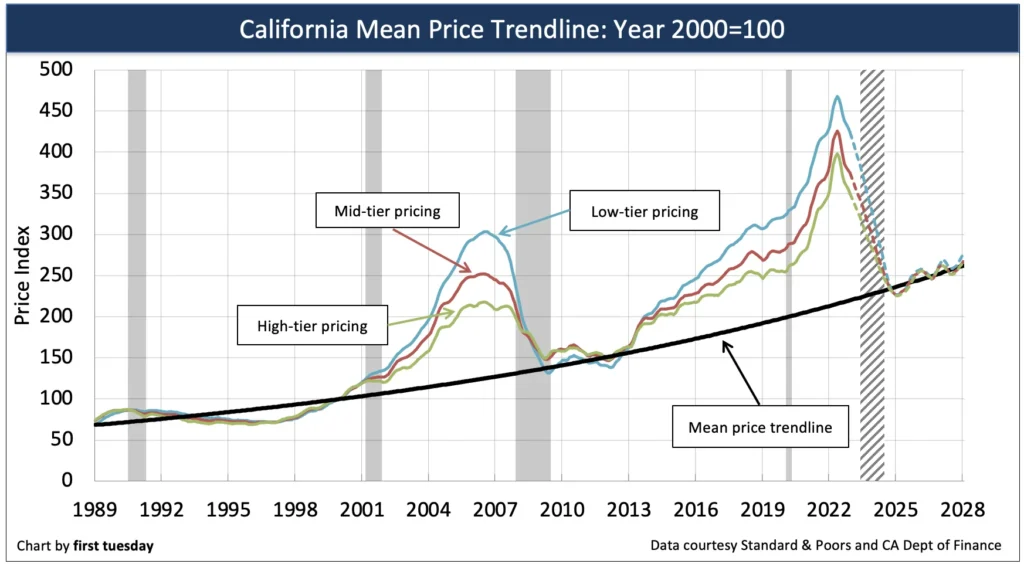
The real estate market in the United States is a dynamic and ever-evolving sector influenced by a multitude of factors, including economic conditions, demographic shifts, interest rates, and government policies. Understanding these market trends is crucial for investors, homebuyers, and industry professionals alike. This article delves into the current landscape of the U.S. real estate market, examining key trends, their implications, and what to expect in the near future.
1. Current State of the U.S. Real Estate Market
Overview
As of 2024, the U.S. real estate market is characterized by a mixture of opportunities and challenges. After the fluctuations caused by the COVID-19 pandemic, the market is stabilizing but remains sensitive to economic indicators. Home prices, inventory levels, and mortgage rates are all critical factors shaping the market.
Key Indicators
- Home Prices: After years of steady increases, home prices have begun to show signs of stabilization. While some regions continue to see price growth, others are experiencing declines or stagnation.
- Inventory Levels: The inventory of available homes remains a pressing issue. Limited supply has kept prices elevated in many areas, even as demand has softened.
- Mortgage Rates: Rising interest rates have influenced buying power, leading to decreased affordability for many potential homebuyers.
2. Demographic Trends Influencing the Market
Millennial Homebuyers
Millennials represent a significant portion of the current homebuying market. As this generation moves into their 30s and begins to form families, their housing needs are evolving.
- Desire for Suburban Living: Many millennials are gravitating toward suburban areas, seeking more space and affordability.
- Remote Work: The rise of remote work has changed location preferences, allowing buyers to consider homes further from their workplaces.
Aging Population
The aging Baby Boomer generation is also reshaping the market. As many boomers downsize or move into retirement communities, their homes become available for younger families.
- Demand for Single-Level Homes: There’s a growing demand for single-level living arrangements that cater to older adults.
- Urban vs. Rural Preferences: Some retirees are moving to urban centers for convenience, while others seek rural areas for peace and affordability.
3. Economic Factors Driving Real Estate Trends
Interest Rates
Interest rates play a pivotal role in the real estate market. The Federal Reserve’s decisions directly impact mortgage rates, influencing buying behavior.
- Higher Rates: Increased rates can deter potential buyers, leading to slower sales and potentially lower home prices.
- Refinancing Slowdown: Homeowners are less likely to refinance when rates rise, leading to a decrease in the overall housing turnover.
Employment and Income Growth
The strength of the job market is another critical factor influencing real estate trends.
- Job Growth: Regions with robust job growth typically see increased demand for housing.
- Income Levels: Higher income levels enhance purchasing power, impacting home sales and rental markets.
Inflation and Cost of Living
Rising inflation affects housing affordability. As the cost of living increases, potential buyers may find it more challenging to enter the market.
- Housing Affordability: Homes that were previously affordable may now be out of reach for many first-time buyers.
- Rental Market Pressure: Increased demand for rental properties often leads to rising rents, further straining household budgets.
4. Regional Variations in the Real Estate Market
The U.S. real estate market is not a monolith; it varies significantly from region to region. Understanding these regional differences is crucial for investors and buyers.
West Coast
- High Prices: Coastal cities like San Francisco and Los Angeles continue to experience high home prices, driven by limited inventory and strong demand.
- Tech Influence: The tech sector heavily influences housing markets in this region, leading to unique pricing dynamics.
Midwest
- Affordability: The Midwest offers some of the most affordable housing options in the country, attracting first-time buyers.
- Stability: Markets in cities like Chicago and Indianapolis are generally more stable, with less volatility compared to coastal markets.
South
- Population Growth: Southern cities like Austin and Nashville are experiencing significant population growth, driving demand for housing.
- Diverse Economy: A mix of industries, including technology, healthcare, and manufacturing, supports job growth and housing demand.
Northeast
- Aging Population: Many areas in the Northeast are facing an aging population, impacting housing demand and pricing.
- Urban vs. Suburban Shift: There’s a trend toward suburban living as families seek more space and better schools.
5. Impact of Technology on Real Estate Trends
Technology is transforming the real estate industry, affecting everything from how properties are marketed to how transactions are conducted.
Online Listings and Virtual Tours
The rise of online platforms has changed how buyers search for homes. Virtual tours and 3D walkthroughs have become standard, allowing potential buyers to view properties without visiting in person.
- Increased Competition: As more buyers can access listings online, competition can drive up prices in popular areas.
- Efficiency: Technology streamlines the buying process, making it easier for buyers to navigate the market.
Real Estate Investment Platforms
Crowdfunding and online investment platforms have democratized real estate investing, allowing smaller investors to enter the market.
- Access to Opportunities: These platforms provide access to various real estate investments that may have been previously unavailable.
- Diversification: Investors can diversify their portfolios with lower capital requirements.
6. Government Policies and Regulations
Government policies significantly influence the real estate market, from tax incentives to zoning regulations.
Tax Policies
Tax incentives can encourage homeownership and real estate investment. Programs like the mortgage interest deduction provide financial relief to homeowners.
- First-Time Homebuyer Programs: Many states offer assistance programs to help first-time buyers enter the market.
- Capital Gains Tax: Changes in capital gains tax laws can affect real estate investors’ decisions.
Zoning and Development Regulations
Zoning laws and regulations can either facilitate or hinder development projects, impacting housing supply.
- Affordable Housing Initiatives: Some municipalities are implementing policies to encourage the development of affordable housing.
- Density Regulations: Changes in zoning regulations can allow for higher density housing, addressing inventory shortages.
7. Future Trends to Watch
As we look ahead, several emerging trends are likely to shape the U.S. real estate market.
Continued Remote Work
The persistence of remote work is expected to impact housing preferences. More individuals may seek homes in suburban or rural areas, further driving demand in those markets.
Sustainability and Green Building
Increasing awareness of climate change is pushing the real estate market toward sustainable practices.
- Green Certifications: Properties with energy-efficient features and green certifications may see increased demand.
- Sustainable Communities: Developments focused on sustainability are becoming more popular among environmentally-conscious buyers.
Urban Revitalization
Many urban areas are experiencing revitalization efforts aimed at attracting residents back to city centers.
- Mixed-Use Developments: These developments combine residential, commercial, and recreational spaces, appealing to younger buyers.
- Infrastructure Improvements: Investments in public transportation and infrastructure can enhance the appeal of urban areas.
Increased Focus on Affordability
As affordability continues to be a pressing issue, expect more initiatives aimed at addressing housing shortages and rising prices.
- Inclusionary Zoning: Policies requiring developers to include affordable housing units in new projects may become more common.
- Public-Private Partnerships: Collaborations between government and private developers can help address housing shortages.
Conclusion
Understanding real estate market trends in the USA is essential for anyone involved in the sector, whether as an investor, buyer, or industry professional. The current landscape is shaped by a variety of factors, including demographic shifts, economic conditions, and technological advancements.
As we move forward into 2024 and beyond, staying informed about these trends will be crucial for making informed decisions. Whether you’re looking to buy your first home, invest in rental properties, or navigate the complexities of the real estate market, understanding these trends will provide valuable insights into potential opportunities and challenges.
By paying attention to the changing dynamics of the market, you can position yourself to make smart, strategic moves in the ever-evolving world of U.S. real estate.



